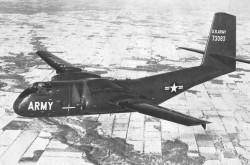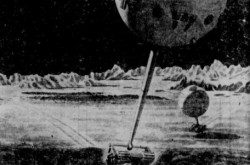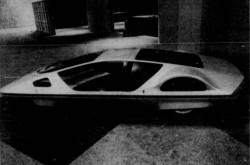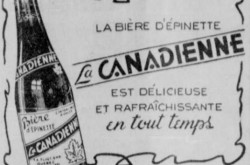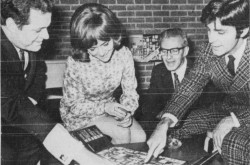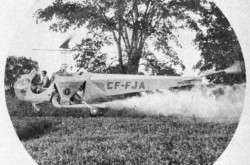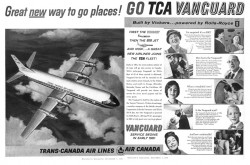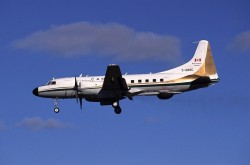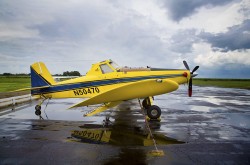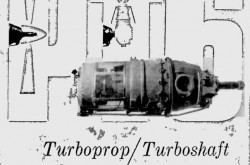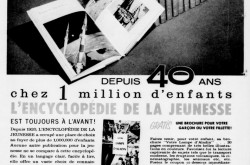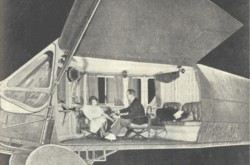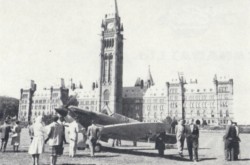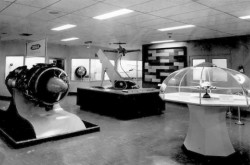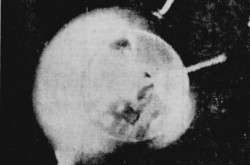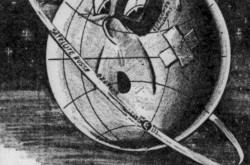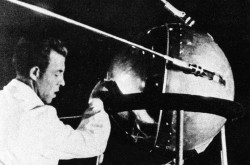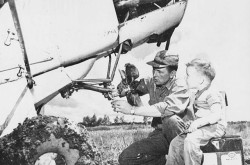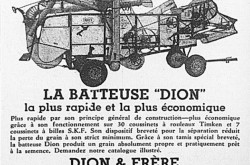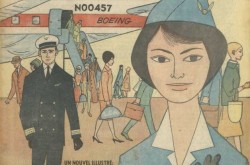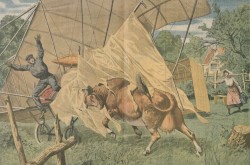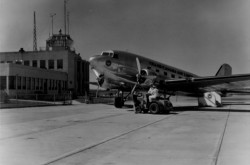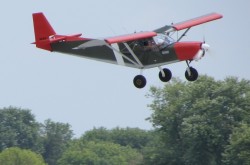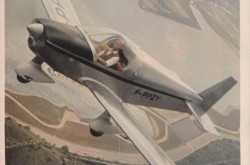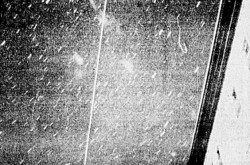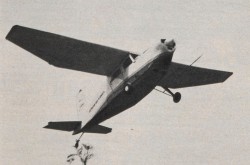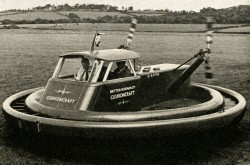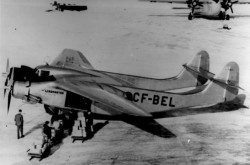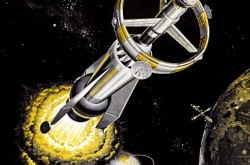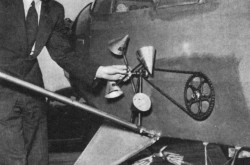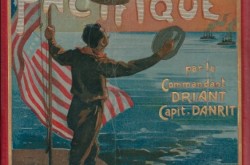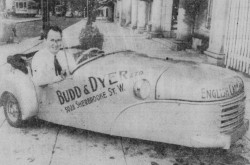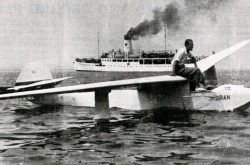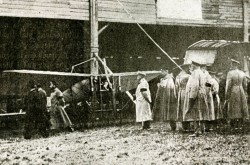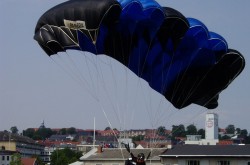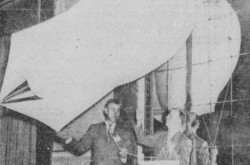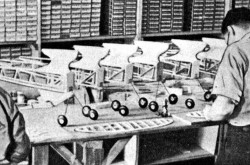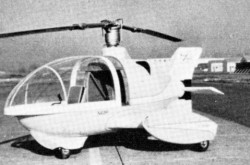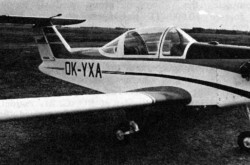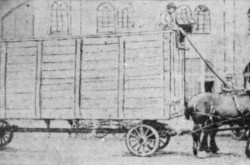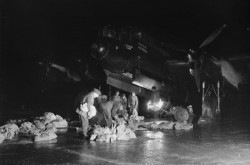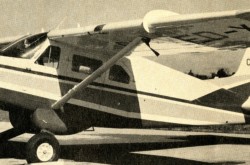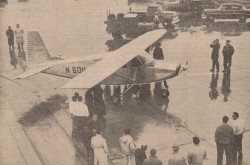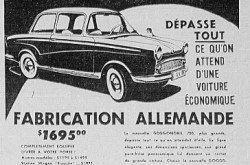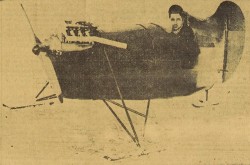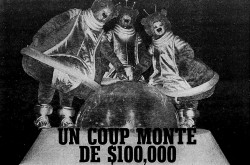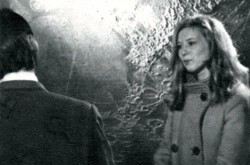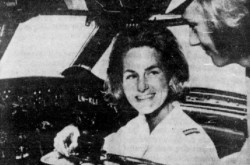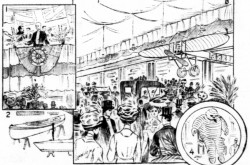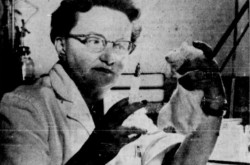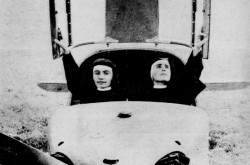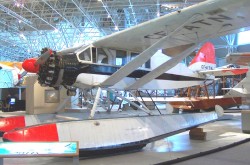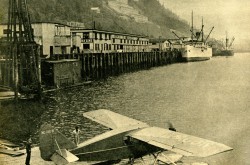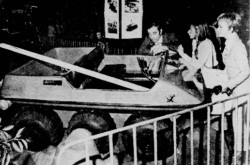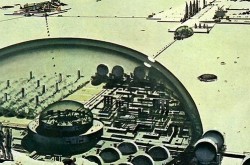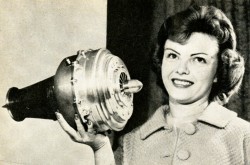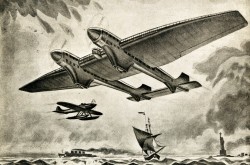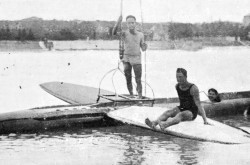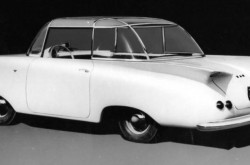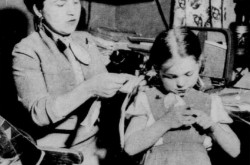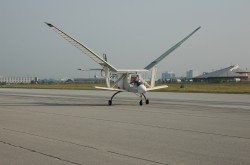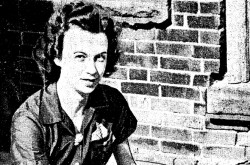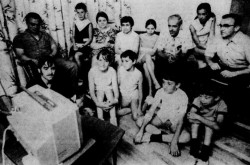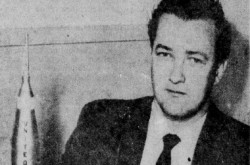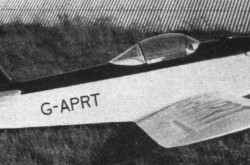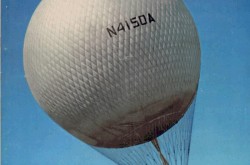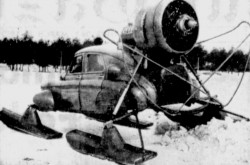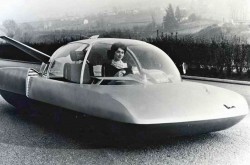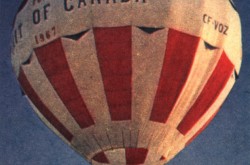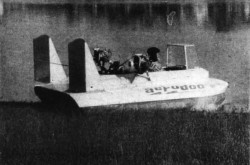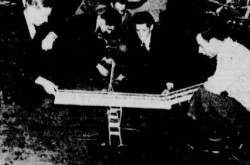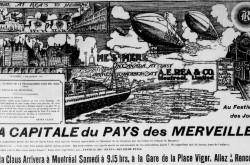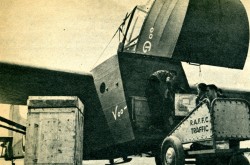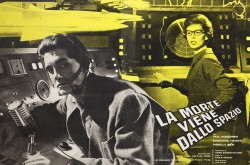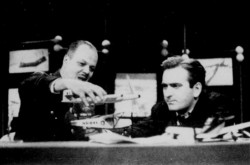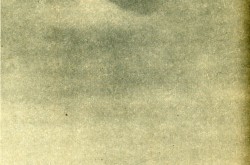A terrific trio active during the early days of aviation in Québec: Ernest Anctil, Gustave Pollien and Percival Hall Reid, part 3

Hello again and welcome back, my reading friend. Hopefully things are still going well in your corner of the Milky Way galaxy. Yours truly also dares to hope that this third and final part of the saga of our terrific trio will please you as much as the first two.
You will remember that we ended the second part of this article when the First World War began in 1914. You will also remember that there was no air force in Canada at that time.
As intrigued by aviation as some of the Canadian public was, the fact was that the federal government was not really interested in that question. Indeed, Canada was, with Newfoundland, the only dominion which was not really interested in aerial matters. And Newfoundland was certainly not a very influential dominion.
And yes, that interest was derived from the fact that, during the 1911 Imperial Conference, held in London, England, in May and June… 1911, the British government led by Herbert Henry Asquith, as well as its Dominion counterparts, agreed that air services / forces should be developed by the United Kingdom and the Dominions. The former’s Royal Flying Corps was established in April 1912. It took over the Air Battalion of the Corps of Royal Engineers of the British Army and some sort of unit within the Royal Navy, thus giving birth to a Military Wing and a Naval Wing.
A brief digression if I may, and I permit myself so rarely. The very first military aeroplane, the Wright Military Flyer, entered service in 1909 with the United States Army Signal Corps. The handful of men who pampered that aeroplane included a young Ontarian who had served in the United States Army since 1895. Sergeant Herbert Marcus became a pilot around 1909-10. End of digression.
Not that the interest of the other dominions in aerial matters was huge anyway, mind you. New Zealand received a pair of Blériot Type XIs, a British gift, in 1913. Australia, meanwhile, formed the Australian Aviation Corps in March 1913. That air force appeared to have 4 aeroplanes as of August 1914. South Africa, finally, in 1913, subsidised the training of several pilots for an air force, the South African Aviation Corps, which was created in January 1915.
In fairness, yours truly must point out that the geopolitical situation of Canada differed ever so slightly from that of South Africa and Australia. The former indeed had as a neighbour a German colony, Deutsch-Südwestafrika, in English German South-West Africa, today’s Namibia, which could become the anchor point for an invasion in the event of a conflict between the German Empire and the British Empire.
The second, on the other hand, reacted with some concern to the withdrawal of most Royal Navy ships to the motherland, from 1905 onward, in order to face the Kaiserliche Marine, a withdrawal mitigated in the eyes of the British government by a certain reinforcement of the Anglo-Japanese alliance of January 1902.
However, that alliance did not please the Australian government, which feared that the Japanese Empire could decide not to defend the interests of the British Empire in the event of a conflict with the German Empire. There were in fact fears that the Japanese Empire could take advantage of such a conflict to occupy the German colonies and protectorates in the region and exert pressure, even invade other colonial territories in Southeast Asia, and even Australia itself, in order to appropriate their resources, but I digress.
And you have a question, do you not, my reading friend? What were these German colonies and protectorates, you ask? They were Deutsch-Samoa and Deutsch-Neuguinea, in other words, German Samoa and German New Guinea. It should be noted that the latter includes many islands and archipelagos in the Pacific Ocean.
The absence of a Canadian air force and the federal government’s weak interest in aviation did not mean that the aviation community remained idly by when the First World War broke out in 1914. Nay.
One only had to think of the creation, in Montreal-South, Québec, it seemed (shortly?) after the beginning of the conflict, it seemed, of Canadian Aircraft Works (Incorporated? Limited? Registered?). Its founder was none other than Gustave Pollien. Well, Pollien and his backer, Georges Méroz.
Either way, Canadian Aircraft Works wanted / hoped to sell aeroplanes to the Department of Militia and Defence and train pilots at $ 350 per person, or over $ 8 900 in 2022 currency, for that same organisation. Canadian Aircraft Works also committed to issue a certified pilot’s license to each person who had passed all the exams – a curious undertaking, to say the least, given the fact that no known Canadian organisation then had the right to issue pilot licenses.
In any event, the management of Canadian Aircraft Works sent a letter to some person or other in the federal government no later than November 1914. These efforts, the first in Canada, failed. As you may well imagine, the government was in fact then grappling with far more important problems.
The first aeroplane used by the new aeroplane manufacturing firm was seemingly the single-seat, or 2-seat, biplane piloted by Pollien in the spring of 1914. The presence of that flying machine in the skies of the region, although harmless before the start of the First World War, aroused a little more / a lot more fears after the start of the conflict.
You see, on 14 August, a mysterious aeroplane equipped with a powerful searchlight reportedly flew over Mount Orford, not far from Eastman, Québec, in the Eastern Townships, today’s Estrie. Early in the morning of 26 August, a mysterious aeroplane reportedly flew over Melocheville, Québec, on the south shore of the St. Lawrence River, near the Soulanges Canal, upstream from the island of Montréal. The presence of at least one mysterious aeroplane was mentioned several / many times, in the evening it seemed, by the soldiers of the Canadian Militia who protected that rather important canal, and that at least until around mid-September. Despite certain journalistic claims, said soldiers did not open fire on the mysterious visitor(s). On 21 September, a mysterious aeroplane reportedly flew over Saint-Hilaire, Québec, along the Richelieu River.
On 10 January 1915, early in the morning, a mysterious aeroplane equipped with a powerful searchlight reportedly flew over Saint-Martin, Québec, a village not far from Laval, on Jesus island, north of the island of Montréal. Late on the evening of 11 February 1915, a mysterious aeroplane reportedly flew over Montréal, Québec, itself.
And if you believe that these observations only took place in Québec, my reading friend, think again. Beginning in mid-August 1914, for example, an aeroplane (or a strange light?) was reportedly observed in Eastern Ontario, including not far from Brockville, Ontario, over several / many days (or nights?). A strange light was reportedly observed by many residents of Aurora, Ontario, a town to the north of Toronto, Ontario, over several / many nights, toward the end of August. A local newspaper suggested that these concerned good people were seeing the planet Jupiter. Another strange light was reportedly observed by many people living in or near Sault Ste. Marie, Ontario, over several / many nights, toward the end of September.
Would you believe that, on the evening of 14 February 1915, the Prime Minister of Canada received an urgent phone call from the mayor of Brockville? Allan Donaldson informed Sir Robert Laird Borden that at least 3 unidentified aeroplanes from the United States had just crossed the St. Lawrence River. These flying machines, obviously piloted by German airmen who were up to no good, if I may paraphrase, out of context, the instructions of the Marauder’s Map used by a certain young wizard in the feature film Harry Potter and the Prisoner of Azkaban (2004), were heading north, presumably towards Ottawa, Ontario. Concerned but calm, Borden immediately contacted the Chief of the General Staff of the Canadian Militia, a British officer, Major-General Willoughby Garnons Gwatkin.
Meanwhile, the Commissioner of the Dominion Police receives an equally urgent phone call from the chief of police of Brockville, William Burke. Although somewhat skeptical, Arthur Percy Sherwood ordered that the lights on various government buildings, such as the Parliament Building’s Victoria Tower and the Royal Canadian Mint, be turned off as a precaution. As word spreads in Ottawa, the curtains of other buildings were drawn and / or their lights turned off.
Borden, Sherwood and many other residents of the nation’s capital remained on alert for an indefinite period with no aeroplane showing up.
As you may imagine, many articles about the mysterious German aeroplanes appeared the next day in the daily newspapers of Ottawa and other major and not so major Canadian towns and cities. And yes, many articles about the mysterious German aeroplanes appeared in the daily newspapers of many American and British towns and cities.
Dozens of Brockville residents claimed to have seen these aeroplanes, it was said. One of these flying machines had even pointed a powerful searchlight on the main street of the city. Worse still, the aeroplanes might have dropped fireballs into the St. Lawrence River, near the Canadian shore. Dozens of Brockville residents were in shock.
Some suggested that German aviators might attack Ottawa on the evening of 15 February. Orders were therefore sent to extinguish the lights illuminating various government buildings or to draw their curtains. Again, many residents of the nation’s capital remained on alert for an indefinite period with no aeroplane showing up.
Coincidentally, the lights illuminating the members of The Honourable the Commons of the United Kingdom of Great Britain in Parliament assembled, in London, England, suddenly went out during the evening of 15 February. A very popular Member of Parliament, the labourite William “Bill” Crooks, shouted in the dark “Hello, they’re here!” Everyone burst out laughing – at the expense of those poor Canadians who seemed to be afraid of their own shadow.
Mind you, the residents of several English towns had not laughed when a pair of rigid airships of the aforementioned Kaiserliche Marine bombed them on the morning of 19 January, but I digress.
More than a century later, an air of mystery still hangs over what happened in Brockville in February 1915. It was believed at the time that young Americans had sent balloons carrying fireworks into the sky to scare the good people across the Canada-United States border. Nowadays, others think that these good people saw unidentified flying objects.
If I may venture to quote the 1980 aphorism by American astronomer / astrophysicist / author / science communicator / cosmologist Carl Sagan (Hello, EP!), extraordinary claims require extraordinary evidence. As far as the 1914-15 sightings are concerned, that evidence simply does not exist. Anyway, let us move on – and back to our story.
Aware of the need to make itself known and appreciated, the management of Canadian Aircraft Works contacted the Montreal Automobile Trade Association in order to exhibit its first aeroplane on the site of the Montreal Motor Show which was to be held in late January, early February 1915, in Montréal. History does not say if that wish was granted.
That effort may well have been linked to Canadian Aircraft Works’ project to set up a military pilot training program and a flying school.
Indeed, Pollien had a pupil as January 1915 came to an end, and he was certainly not some random guy. First captain of the Club de hockey Canadien Incorporé, Jean-Baptiste “Jack” Laviolette was one of the founders of that legendary professional team created in 1909. Mind you, he also raced automobiles.
At the end of July 1915, Lieutenant-Colonel G.E. Burns of the Corps of Guides of the Canadian Militia, then an intelligence officer on the staff of Military District No. 4 of said militia, based in Montréal, placed Pollien’s biplane under military surveillance in its Coteau Rouge shed. Pollien was grounded until the federal government made a decision about him and his aeroplane, and...
Do you have a question, my reading friend? Why act like that, you ask? A good question. You see, since around 20 June people from the Montréal area and elsewhere, Rigaud, Magog and Huntingdon, Québec, for example, had been contacting the headquarters of Military District No. 4 to report the presence of mysterious aeroplanes or, more precisely in most cases, lights above their heads at night. At the end of July, a Montreal engineer, C.O. Laughlin, observed such lights with binoculars for more than 2 hours, which went to prove that allegedly trustworthy / reliable people were / are just likely as anyone to let their imagination run amok. Sorry, sorry. I apologise for this unseemly display of scepticism.
Speaking (typing?) of scepticism, Burns was somewhat… skeptical about the various sightings but nevertheless sent teams to Rigaud, Magog, Huntingdon, etc., to interview witnesses. If one or several aeroplanes actually flew in the skies of Québec, their pilots did so without permission. Burns was determined to get to the bottom of it.
By the way, that Burns may, I repeat may, be the George E. Burns who had worked at the beginning of the 20th century for the Special Services Department of the Canadian Pacific Railway Company, a Canadian transport giant mentioned several times in our blog / bulletin / thingee since April 2018.
Despite its name, the main function of said special service was to hire “docile” foreign labour, in particular Italians, Galicians and Chinese, for the summer work of the Canadian Pacific Railway, but I digress.
As you may imagine, the presence of the Coteau Rouge hangar and its content did not go unnoticed.
When Pollien and / or Méroz showed up on the scene, in late July, along with at least one Canadian Militia officer, they hurried to unlock the hangar door. Burns or his representative then discovered that said hangar, apparently very well equipped, contained an airworthy biplane and two other aeroplanes in the process of being manufactured.
The commander of Military District No. 4 and director of Canada Life Assurance Company for Québec questioned Pollien but concluded that he had not acted maliciously. Colonel Erastus William Wilson, however, asked him to submit an official request in order to be able to fly and to contact the Swiss consul general in Montréal, Henri Martin, in order to obtain certain personal documents.
Any unauthorised aerial stroll within 16 kilometres (10 miles) of Montréal being liable to a fine of $ 5 000, or just over $ 123 000 in 2022 currency, information which left Pollien speechless, the latter as well as Méroz indicated that they would hold their peace and obtain all the necessary paperwork.
Pollien also claimed to have been approached by people who wanted to operate a flying school in the Montréal region. Better yet, he claimed that one of these people was lying to him when he had said he was Swiss. That mysterious individual was in fact German, stated Pollien. Burns indicated he would investigate. From the looks of it, said mysterious individual was never apprehended, assuming he really was a spy.
Questioned by journalists, Pollien claimed to had told Wilson that his biplane was not the mysterious aeroplane recently observed, especially at night it seemed, in the Montréal area. He had in fact only several brief hops. Indeed, Pollien maintained that he would in fact never fly at night. Landing in the wilderness without the light of day was far too risky, stated the aviator.
Also questioned by journalists, Wilson indicated that the information provided by Pollien confirmed that the reports of sightings of aeroplanes flying over Montréal and its surroundings were unfounded.
Obviously, not everyone read the memo. Indeed, 3 groups of residents of the Montréal area saw a mysterious aeroplane in the sky during the evening of 10 August. At least 3 other groups make similar observations three evenings later. Anyway, let us move on, and…
Unidentified flying objects? Sigh… Extraordinary claims require extraordinary evidence. As far as the August 1915 sightings are concerned, that evidence simply does not exist.
Let us be blunt, the people who claimed to have seen strange lights or mysterious aeroplanes in 1914-15 had most certainly seen a planet, a star or some weather phenomenon which could not have been more natural.
Shortly before mid-August 1915, a trio of officers from Military District No. 4 of the Canadian Militia and a representative of the Department of Public Works traveled to Coteau Rouge to examine the aeroplane of Canadian Aircraft Works and see Pollien fly. That quartet was actually responding to an invitation from the aviator’s financial backer, the aforementioned Méroz, who would have liked to receive an order from the Canadian government which would lead to the erection of a small aeroplane factory on the south shore of the St. Lawrence River, near Montréal.
The wings of the aeroplane in question, a 2-seat biplane, not yet having been covered with dope in order to waterproof them, one had to wonder if it was not in fact brand new.
If such was the case, one was entitled to wonder what had happened to the aeroplane piloted by Pollien in 1914. Could it be that one of the aeroplanes being manufactured in the workshop of Canadian Aircraft Works was in fact undergoing a makeover?
Be that as it may, that lack of coating led Pollien not to take a passenger with him when he took to the air in the presence of the federal delegation. That flight took place without incident.
The officers of the Canadian Militia and the representative of the Department of Public Works examined the aeroplane after it had returned to terra firma. They had also examined it before its flight. The delegation thanked Méroz and Pollien for their hospitality and returned to Montréal.
While Pollien had the official permits allowing him to carry out other test flights since the beginning of the month, he had however to contact the Military District No. 4 of the Canadian Militia before carrying out longer flights.
One of these flights, scheduled for 6 September, was to take place as part of a tag day to the benefit of the 69th Battalion (French-Canadian) of the Canadian expeditionary force which was to go fight in Europe. Pollien was to fly from Coteau Rouge to Mance Park, the unofficial name favoured by many French-speaking Montrealers for the space known more officially as Fletcher’s Field, Montréal. The commander of said battalion, an infantry unit, Lieutenant-Colonel Joseph Adolphe Dansereau, the youngest lieutenant-colonel in the armed forces of the British Empire it seemed, he was indeed 25 years old, would make that journey with him.
On the appointed day, Pollien took off alone and covered only a short distance before returning to his starting point. He blamed a mechanical problem. The several thousand people present at Mance Park were somewhat disappointed. This being said (typed?), some of them may not have been too, too surprised. They remembered only too well that more than one aviator had failed to perform his duty in previous years, thus leaving crowds on the ground unsatisfied.
On 7 September, Pollien flew over Montréal. He was flying alone again. The cheering crowd waiting for him at Mance Park was somewhat disappointed when it realised the aviator had no intention of landing. It would no doubt acquiesce in a line from a character of the 1987 romantic comedy and cult film The Princess Bride, get used to disappointment.
While Pollien dropped a good number of recruitment flyers as he flew over Mance Park, the fact was that the breeze scattered them to the four winds. Few young people managed to grasp them. Worse still, not one of these young men showed up to enlist and thus obtain the $ 5, or approximately $ 125 in 2022 currency, promised by Dansereau on some of these documents.
Drawing on that flight, Pollien quickly visited the aforementioned Wilson to promote an aeroplane factory project.
That project, not to mention the proposed pilot training program, having received no official support worthy of the name, Canadian Aircraft Works closed its doors later in 1915, or at the beginning of 1916, without having obtained the slightest order, or trained any military pilot.
Whether by taste or necessity, Pollien decided in the fall of 1915 to become a fairground / barnstorming pilot.
On 26 September, Pollien was to take to the air in Saint-Jean, Québec, today’s Saint-Jean-sur-Richelieu, east of Montréal, on the grounds of the exhibition. If execrable weather unfortunately grounded him, that was only a postponement. On 3 October, Pollien aroused the enthusiasm of the people of the Saint-Jean region to such an extent that they asked him to return on 10 October. In both cases, the aviator’s performance complemented automobile and motorcycle races. Would you believe that the aforementioned Laviolette was involved in the automobile races which took place in Saint-Jean?
On 23 October, Pollien took to the sky at a site known more or less officially as de Lorimier / Delorimier Park, in Montréal.
On 31 October, the aviator was to fly to Longueuil, as part of sports activities at Longueuil Park. This being said (typed?), there was no evidence that he did anything there.
The same went for the parachute jumps performed, or not, from a fairground hot air balloon by Albert Farley, whose real name was Adalbert C. Gadoury, and / or by Alphonse Stewart, “the king of the air” from Montréal. And yes, these two fairground aeronauts were mentioned in a November 2021 issue of our blog / bulletin / thingee. Ours is a small world, is it not?
On 27 November, Pollien flew over Montréal for almost an hour. He had with him a passenger expected by many young Montrealers. That well-known character was not a “boche détestable” or a “boche malfaisant,” if yours truly may be permitted to quote La Presse or the Montréal daily Le Canada. Nay. He was Santa Claus.
And yes, the cheerful old elf was then known by that name, even in La Presse and other French-language newspapers in Québec. Le Canada, on the other hand, seemingly used the term Bonhomme Noël at least occasionally. The French name by which Santa Claus is known today, namely Père Noël, was already in use, however, but I digress.
Pollien landed at Mance Park. Santa Claus then had plenty of time to distribute small gifts to the 6 000 children who had come to the scene. That joyful and thoroughly capitalist event was sponsored by the Montréal department store Goodwin’s Limited.
Once the distribution of gifts was over, Santa Claus took his place in an automobile which took the lead in a procession with a fanfare which criss-crossed various streets and avenues of the metropolis of Canada before arriving at Goodwin’s. The old elf then entered the store where he would welcome children until around Christmas Eve.
And yes, Santa Claus had obviously begun his journey at the North Pole. Duh… He had flown over Greenland and other northern lands before flying over Westmount and Outremont, two wealthy Québec cities located not far from Montréal, aboard the aeroplane piloted by Pollien in the latter cases. The aviator may in fact have gone partly, I repeat partly, around the island of Montréal.
On 11 June 1916, Pollien was to fly in Vaudreuil, Québec, as part of a major sports festival. On 18 June, he was to fly in Sainte-Thérèse, Québec, as part of another major sports festival. On 25 June, Pollien was to fly in Vaudreuil during the celebrations surrounding the feast of St. John the Baptist, the national holiday of French Canadians. On 1 July, he was to fly in Drummondville, Québec, during the celebrations surrounding Dominion Day. In all these cases, there was / is no evidence that the aviator did anything at these places.
Pollien also flew in Saint-Hyacinthe, Québec, around mid-August, twice, despite the wind, as part of horse competitions held at Laframboise Park. The organisers of the event apparently gave him a lot of dough.
Pollien was also scheduled to fly at the Exposition de la Société d’agriculture du comté de St-Hyacinthe, in … Saint-Hyacinthe, which began on 13 September. The aviator was not able to respect that commitment, however.
Pollien’s absence was due to the fact that his biplane had crashed into a tree on 9 September, following an engine problem. The aviator was then flying towards Dominion Park where he was to make a presentation in front of a large crowd which had come to attend a fair organised for the benefit of the relief fund of the sailors of the Royal Navy. Barely injured despite a hair raising fall, Pollien borrowed a bicycle to go to a hospital. Once bandaged, he rushed to Dominion Park to apologise to the increasingly frustrated crowd still waiting for him.
Yours truly assumes that Pollien and / or the people who had hired him had obtained permission from the Department of Militia and Defence before performing any flight.
Pollien joined the staff of a small Montréal firm, Montreal Patent Promoting Company Limited, at an undetermined date, before or after these potential flights I cannot say.
Yours truly must confess that I found nothing else on the life and career of Pollien, or on the life and career of Ernest Anctil for that matter. At most, I found a reference suggesting that the latter left this world in 1952, at the age of about 64. Georges Méroz, on the other hand, died in April 1955, at the age of 75.
Regarding Pollien, I must report that, in 1933, a gentleman by the name of Gustave Pollien owned land in Rouyn, a city in the Abitibi-Témiscamingue region of Québec, 440 or so kilometres (275 or so miles) to the northwest of Montréal. Said land may have been sold at auction in October of that very year for non payment of taxes.
With regard to Percival Hall “Percy” Reid, I am pleased to inform you that he joined the staff of Ford Motor Company of Canada Limited, a firm mentioned in December 2018, October 2019 and December 2021 issues of our blog / bulletin / thingee, towards the end of the 1910s, or the beginning of the 1920s. Although he ended his aeronautical activities in 1921, following his marriage, Reid remained in contact with many members of the aeronautical community of Montréal for many years. In 1927, he became the mechanical superintendent of the bus division of the Montreal Tramway Company. Reid died in May 1938. He was only 47 years old.
And yes, the Montreal Tramway Company was mentioned in a June 2022 issue of our yadda yadda.
Speaking (typing?) of Montréal, yours truly is pleased to point out that Ernest-Anctil, Gustave-Pollien and Percival-Reid streets can be found today in that great multicultural city, the hub around which the whole of Québec rotates, a hub on which that province depends for its economic well-being.
Before leaving you, my reading friend, I would like to offer you a little something.

The two-seat aerosled apparently designed by Percival Hall Reid, Montréal (?). CASM, 6599.
As you can see, the Reid aerial sled / propeller sled was / is a propeller-driven snowmobile mounted on skis. The only information which accompanied that photograph, apart from Reid’s name, was a date: 1912. I do not know what to think. Indeed, I must admit that I have not found any information on that quite fascinating vehicle, and this is driving me completely bonkers. I will continue to search but without too much illusion.
Incidentally, Alphonse Barreyre, the co-owner of the small automobile repair firm / workshop where Pollien and Anctil then worked, carried out tests with a two-seater propeller sled, at Lafontaine Park in Montréal, in January 1912 at the latest. This being said (typed?), do not get carried away too quickly, my reading friend. The propeller of that vehicle totally open to the elements was in a rear position.
This writer wishes to thank all the people who provided information. Any mistake contained in this article is my fault, not theirs.
See ya later.


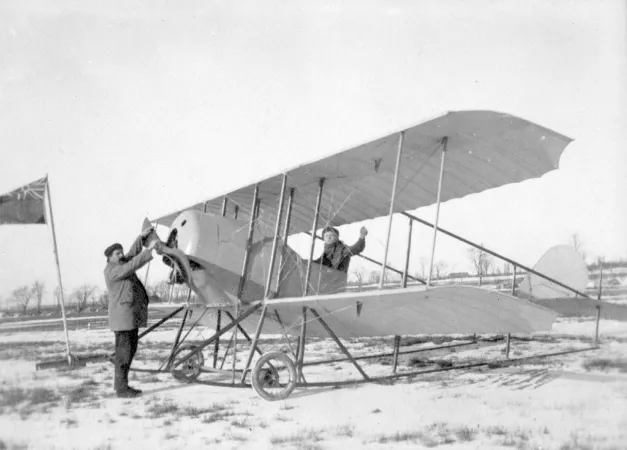












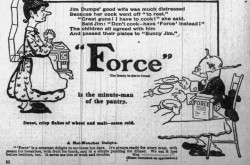
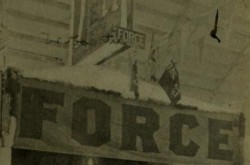
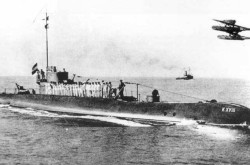
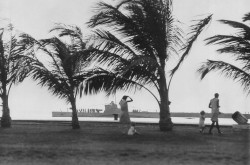
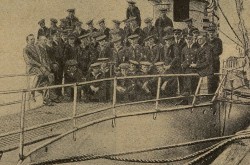
![A block of photographs showing some of the people involved in the bombing of beluga whales in the estuary and gulf of the St. Lawrence River. Anon., “La chasse aux marsouins [sic]. » Le Devoir, 15 August 1929, 6.](/sites/default/files/styles/thumbnail_7/public/2024-09/Le%20Devoir%2015%20aout%201929%20page%206.jpg?h=584f1d27&itok=TppdLItg)

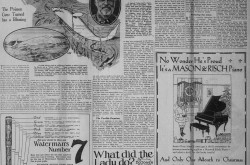

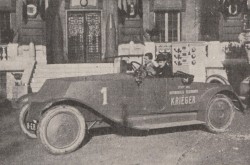
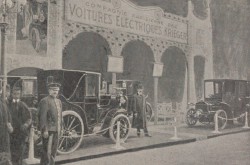

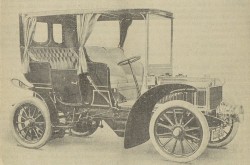


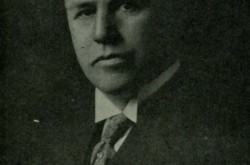
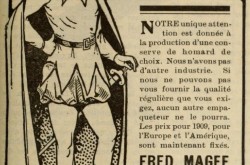
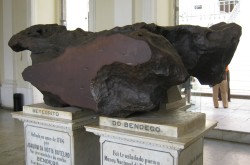



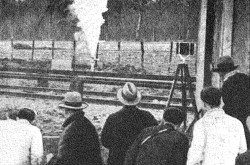

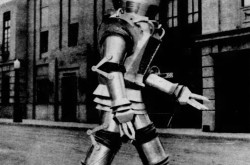

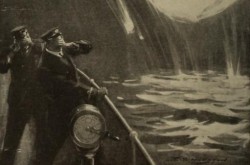
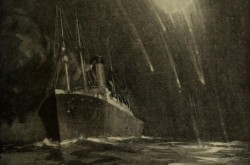
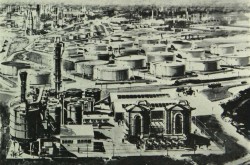
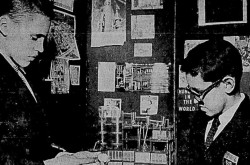

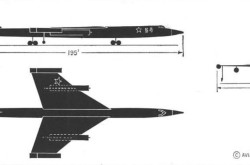

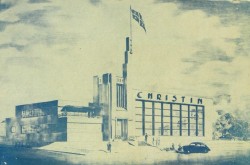
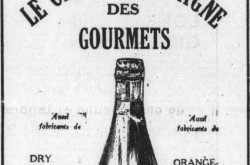
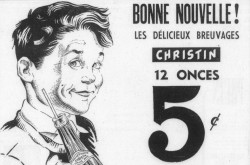
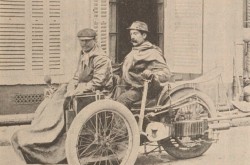
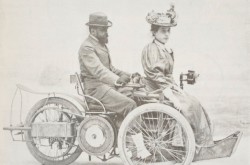
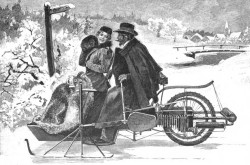
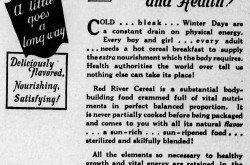
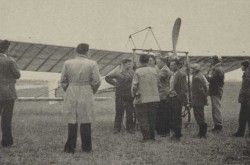
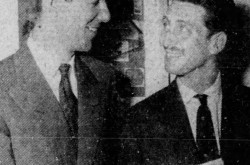
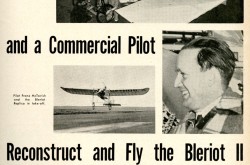
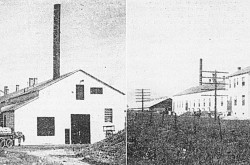
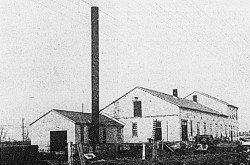
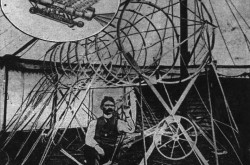
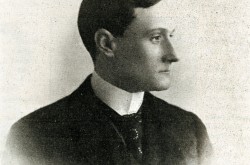
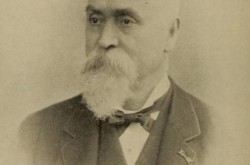
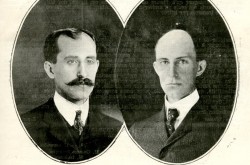
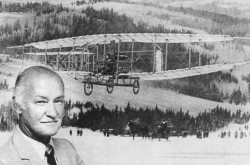
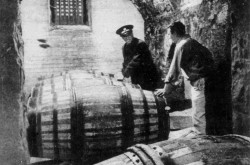
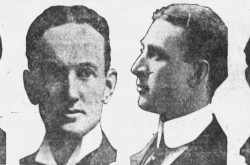
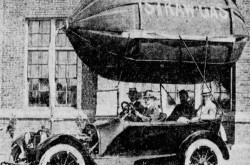
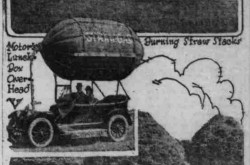
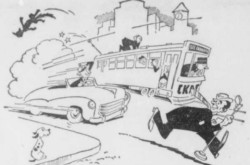
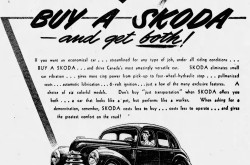
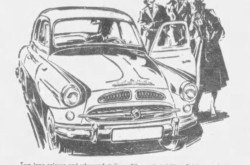
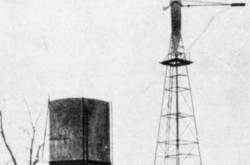

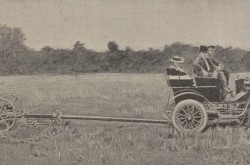
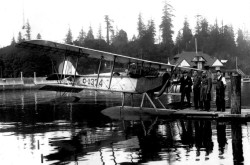
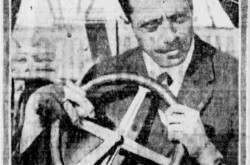
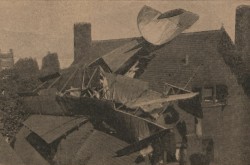
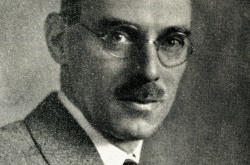
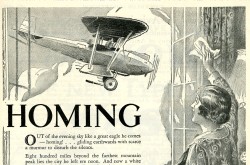
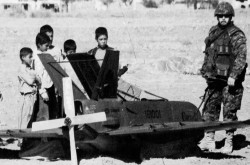
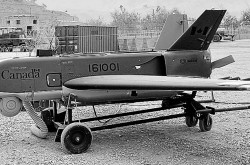
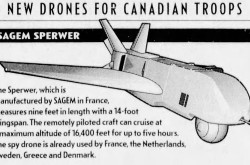
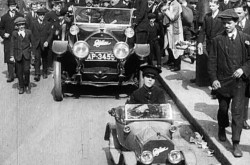
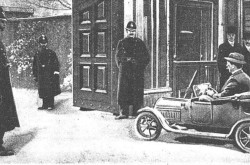
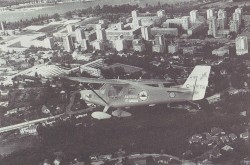
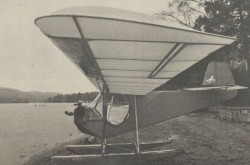
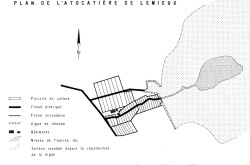
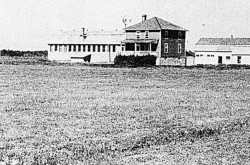
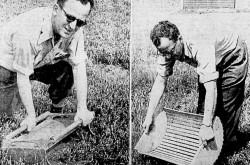
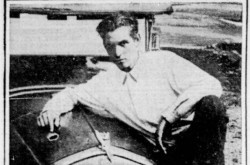
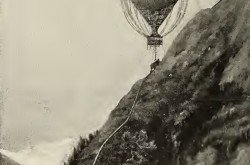
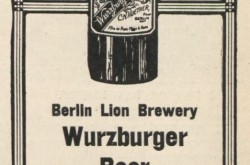
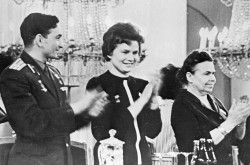
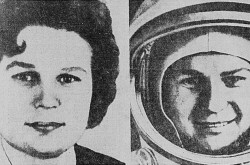

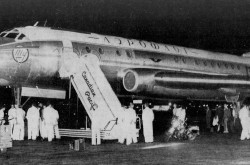

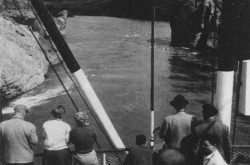
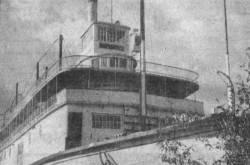
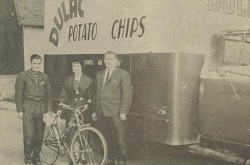
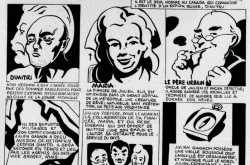
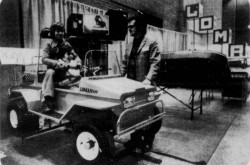
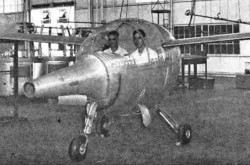

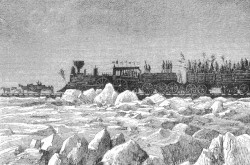
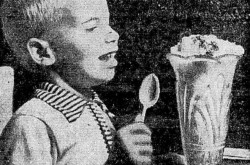
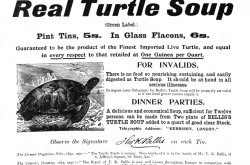
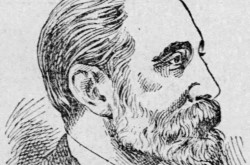
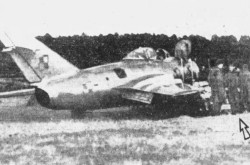

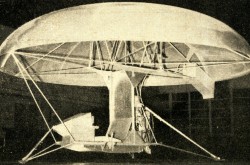
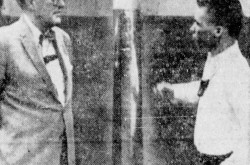
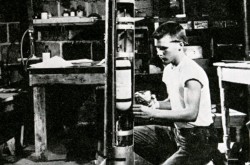
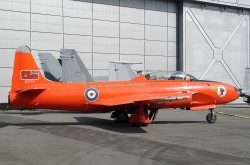
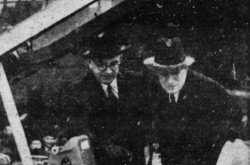
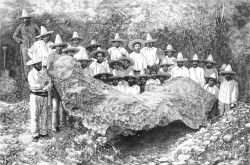

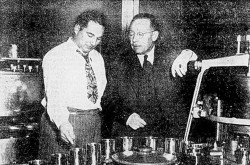
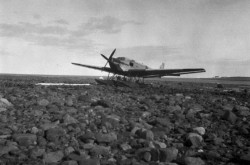
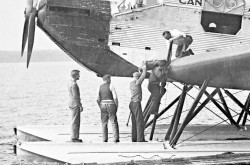
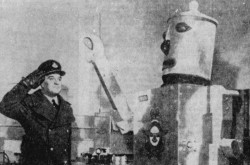
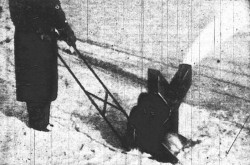
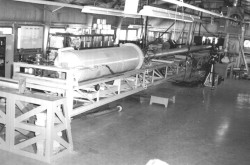
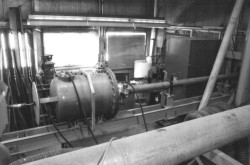
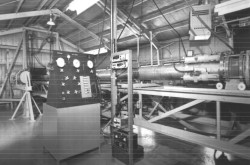
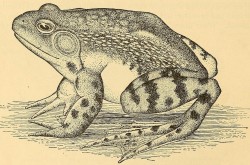
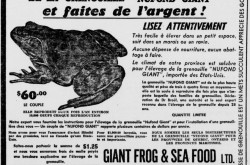
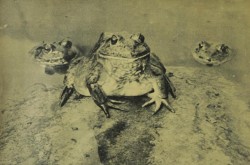
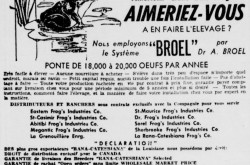
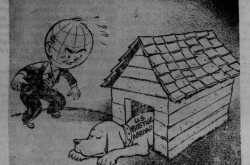
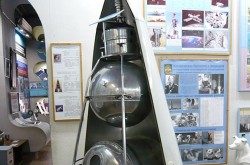
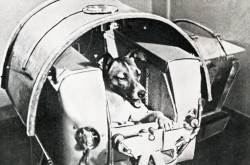
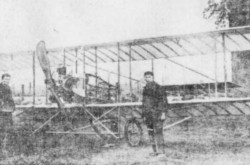
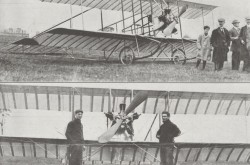
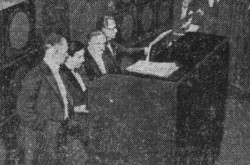
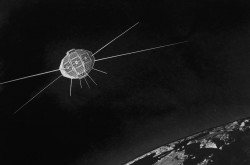

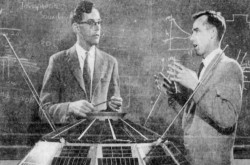
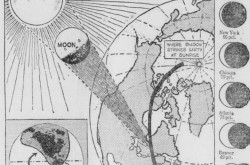
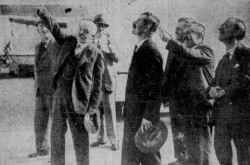
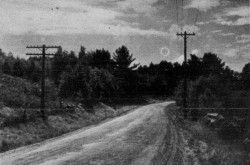

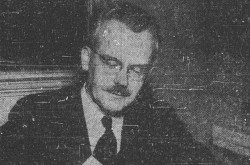
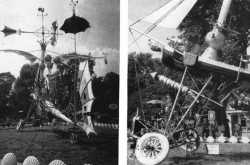
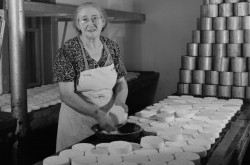
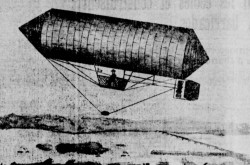
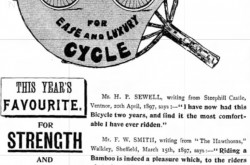
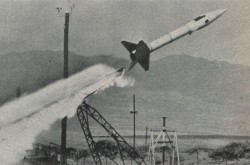
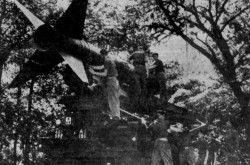
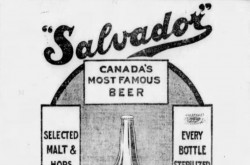
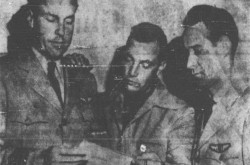
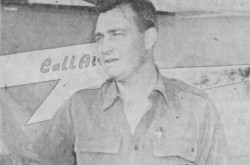
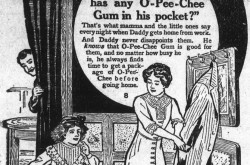
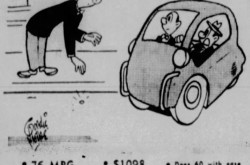
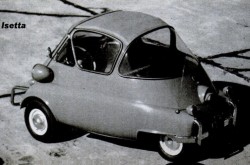
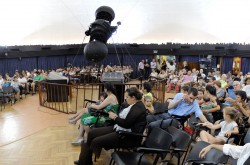
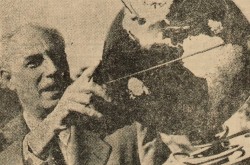
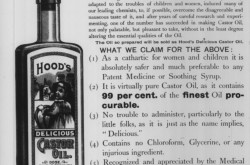
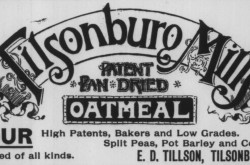
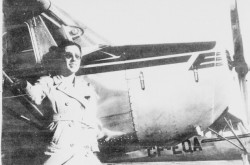
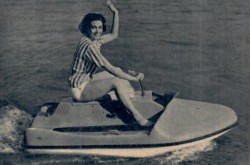

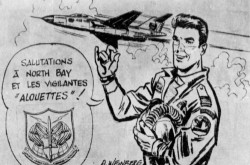
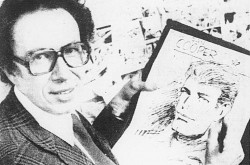
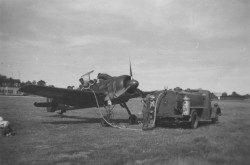
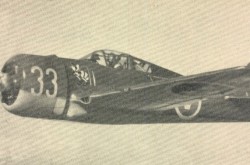
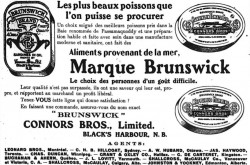
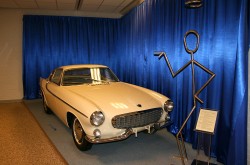
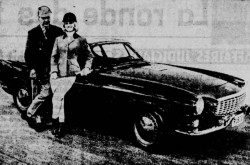
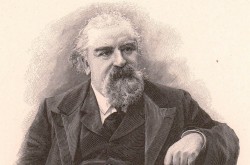
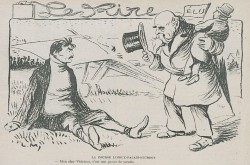
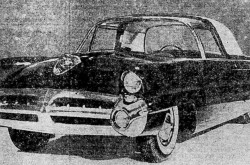
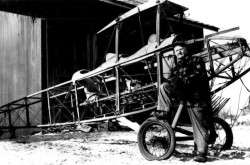

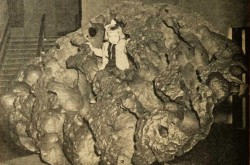
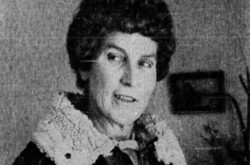
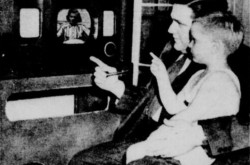
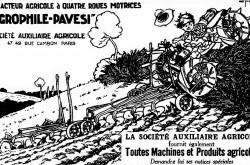
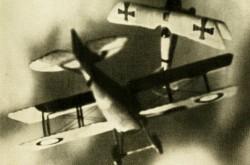
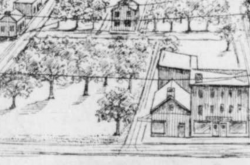
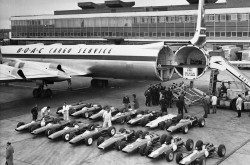
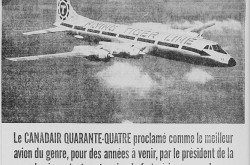
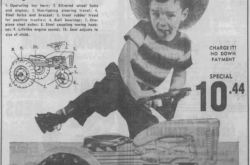
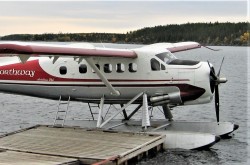
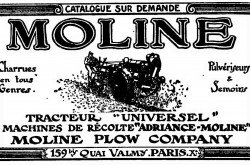
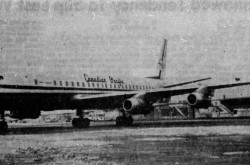
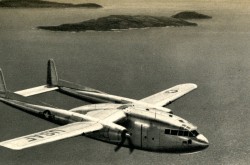
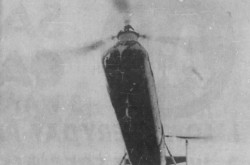
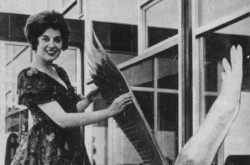
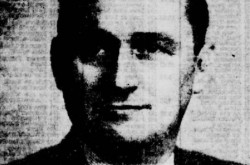
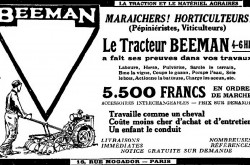
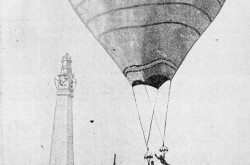
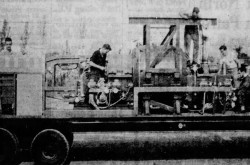
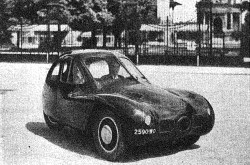
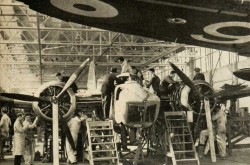
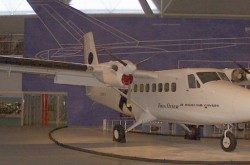
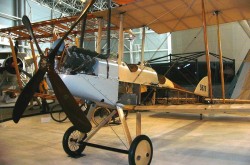
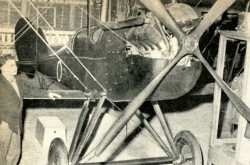
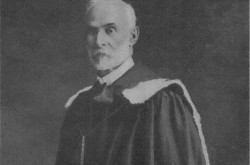
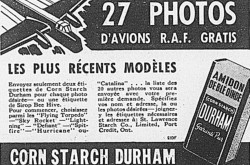
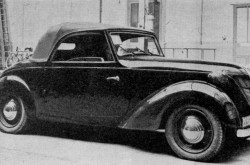
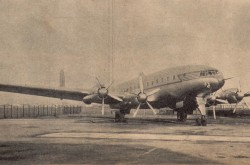
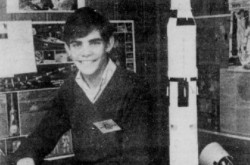
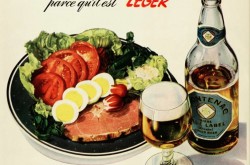
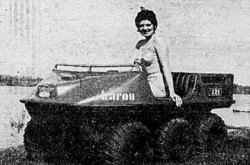
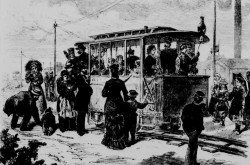
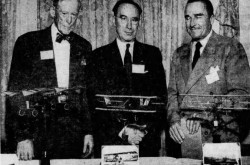
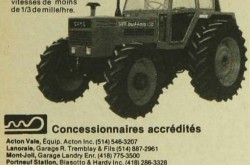

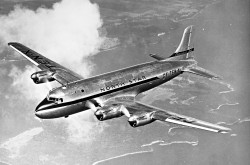
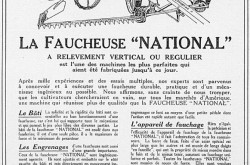
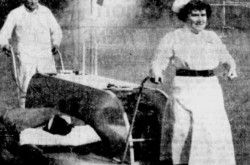
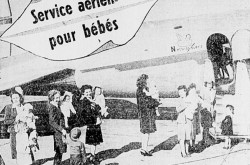
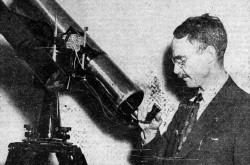
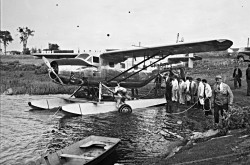
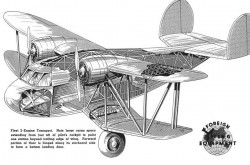
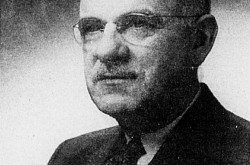
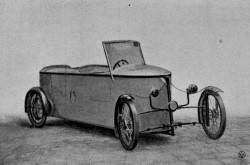
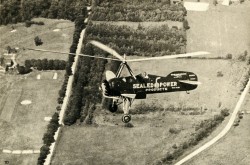
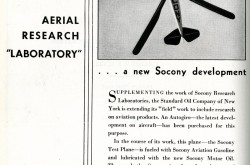
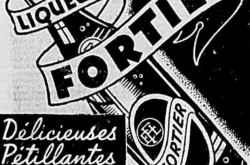
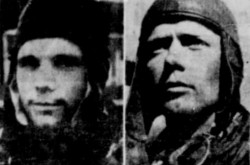
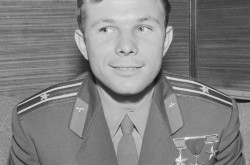
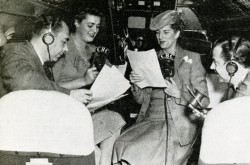
![Peter Müller at the controls [sic] of the Pedroplan, Berlin, Germany, March 1931. Anon., “Cologne contre Marseille – Le mystère du ‘Pédroplan.’ [sic]” Les Ailes, 2 April 1931, 14.](/sites/default/files/styles/thumbnail_7/public/2021-04/Les%20Ailes%202%20avril%201931%20version%20big.jpg?h=eafd0ed4&itok=WnBZ5gMf)
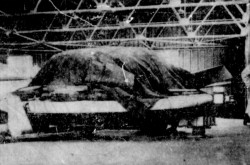
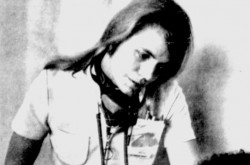
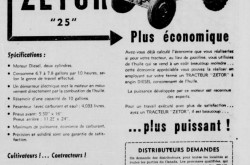
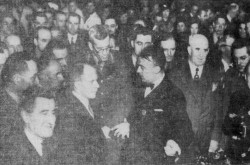
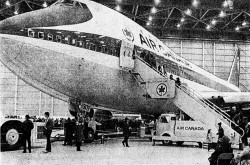
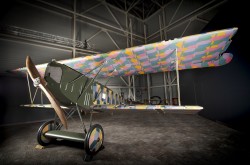
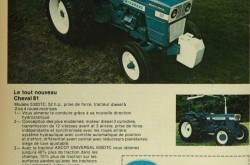
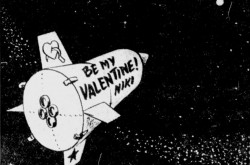
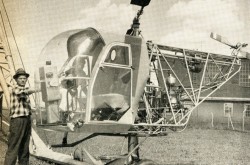
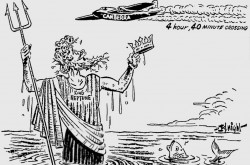
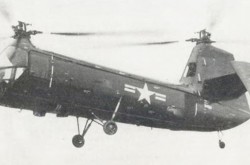
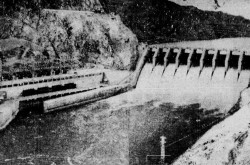
![One of the first de Havilland Canada Chipmunk imported to the United Kingdom. Anon., “De Havilland [Canada] DHC-1 ‘Chipmunk.’” Aviation Magazine, 1 January 1951, cover.](/sites/default/files/styles/thumbnail_7/public/2021-01/Aviation%20magazine%201er%20janvier%201951%20version%202.jpg?h=2f876e0f&itok=DM4JHe5C)
